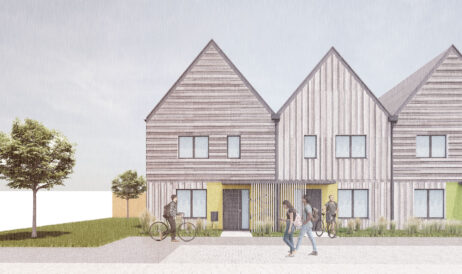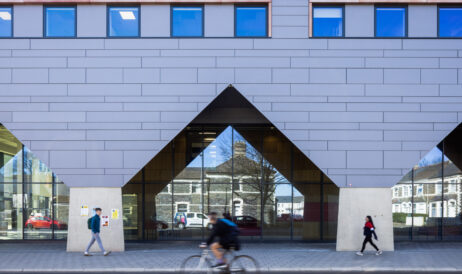As a patient, it’s natural to ask yourself “Am I healthy?” But how many of us stop to think, within the confines of a healthcare building, is this building healthy?
It might seem superfluous, but as a designer of such spaces, I’m acutely aware of the many ways buildings and our environment can influence us. Form and function shape our experiences, our feelings, even our rates of recovery.
In primary care, wellbeing is top of the agenda. The NHS is facing mounting pressures on the front line, where the caseload, variety and complexity of services is ever increasing, often delivered from outdated and crumbling facilities.
The focus is now on a more sustainable and achievable model of care, with prevention and early intervention at the heart. Patients are encouraged to be active participants in their own wellbeing, alongside clinicians.
As detailed in the NHS Five Year Forward View, the Health & Wellbeing model aims to help patients achieve balance in four key areas of their lives, namely; mental wellbeing; healthy living; secure homes and finance; and work, learning and participation.
This paradigm shift necessitates new, transformational styles of working, and buildings to house them, bringing together healthcare, social services and third sector organisations under one roof to deliver a holistic service to local communities.
In tandem, we are also seeing the co-location of primary care services with existing leisure or community facilities – bringing health services to the people (or at least to places where they tend to frequent).
Under the banner of One Public Estate, councils are able to access funding for delivering more integrated, customer-focused services – ideal to facilitate social prescribing.
There is an understanding that we need to address overall wellbeing. Wider issues in life such as stress, poor lifestyle and social isolation can have a massive impact on our physical and metal health. With the aim of reducing the need for specialist intervention, early intervention is shaping the healthcare landscape, designing out dependency by designing in a wellbeing-led experience.
We have exactly the same ethos in our design approach.
In terms of patient participation, we have long understood the need to engage the community, including staff and visitors, early in the design process, to promote ownership and buy-in to the principles of the new development. We see stakeholders take ownership of a completed development, and say that ‘they’ve’ built it – it means that we’ve truly listened, aligning the outcome with their needs and wants.
We design to be welcoming and non-institutional. Abundant natural daylight, fresh air and private views out to soft landscaping, not only complements the therapeutic qualities of the environment, but also ameliorates the ‘fear factor’ which puts many people off visiting the doctor (itself a stress-inducing experience).
Speaking of which, with low GP retention and workplace stress an increasing problem, there needs to be a similar investment in a good staff environment. These are specialised workplaces. Staff need to be able to move easily around the building, without being ‘on demand’, and require breakout spaces to relax. We’ve carefully designed staff experiences to help them do their best work. That means considering their overall wellbeing in the process.
The change in the primary care landscape is a welcome sight. What we hope is that it becomes a joined-up wellbeing service – an experience designed from the ground up. Carefully designed places and spaces should form a part of that service offer.
The best way to promote wellbeing at the community level is to start with a healthy building and go from there.
Want to talk more about healthy buildings? Get in touch with Christine for a chat.






